The Great American Road Trip has been done before; last year, Atlas Obscura published a detailed history of the first coast-to-coast drive from California to New York City, 121 years ago. Jack Kerouac made it counterculture. Simon and Garfunkel did it with soul. Architecture critic and curator John Margolies made it iconic: Beginning in 1972, Margolies traveled off the beaten path to photograph America’s roadside architectural wonders. Beginning in 2005, the Library of Congress acquired his images, making them easily accessible. Now, even if you’re stuck in your office on these long summer days, you can navigate the country’s smallest towns and quaintest vintage attractions via thousands of images available for public use.

Apartments in Twin Towers, Hollywood Beach, Florida.
Margolies held an editorial position at Architectural Record and organized exhibitions with the Architectural Association. In 1970, he curated a show of the work of Morris Lapidus, who at the time designed hotels in Florida in the style of what is now considered Miami Modernism. Entitled “The Architecture of Joy,” the exhibition, characterized by Ada Louise Huxtable, “was presented as an exercise in the popular taste of middle America, the middle of the 20th century in art and what 90 percent of the American public really likes and wants.” She loved such design for its “intimate revelations of pop mentality” which she called “crazy”, but also criticized the notion that elevating such a style to an “aesthetic pantheon” was “uninspired intellectual superschlock”.
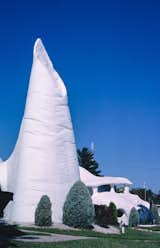
Tower, vertical, Xanadu Farm House of Tomorrow, 13th Street, Wisconsin Dells, Wisconsin.
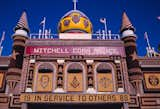
Mitchell Corn Palace, Mitchell, South Dakota.
But Margolies’ reverence for vernacular buildings and quirky oddities continued. Over the next 40 years, he would shoot 11,000 photos in which viewers find attractions like Maxie, the world’s largest goose, in Sumner, Missouri, or the Giant Artichoke in Castro, California. Two personal favorites, a dueling set of giant drawers (one is a building) are set against the blue sky in High Point, North Carolina; The Iceberg restaurant in Tulsa, Oklahoma, appears to be melting in the scorching sun. There are hundreds of miniature golf figures shot at courses around the country, as well as old-school diners with corner neon signs, giant figures of cowboys, dinosaurs and Paul Bunyan parks and recreation areas.
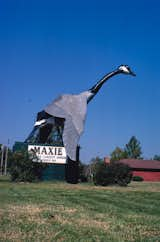
Maxie, the world’s largest goose, Sumner, Missouri.
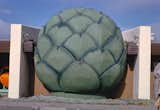
Giant Artichoke, Castroville, California.
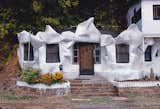
Iceberg Restaurant, Tulsa, Oklahoma.
Online collections also feature hundreds of motels. Some follow the basic Motel 6 configuration – clustered units connected via exterior walkways. Many feature cottage and court-style stops. A host of self-contained mini-homes like Fairyland Cottages in Detroit Lakes, Minnesota, or Pemi Motor Court in North Woodstock, New Hampshire, are perhaps the sweetest examples of vacation accommodations across the Holiday Inns highway.
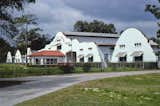
Alamo Plaza Hotel Courts, diagonal view from right, Route 90, Gulfport, Mississippi.
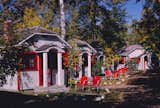
Fairyland Cottages, diagonal view, W. Lake Lane, Detroit Lakes, Minnesota.
“Although much of the architecture Margoli documented was past its prime by the time he photographed it, he rejected the word ‘nostalgia’ in describing his work, saying: ‘I don’t want to be ahead of my time. I want to be in sync with it,” says a Library of Congress article. Perhaps Margolies didn’t want us to be nostalgic for the days when McDonald’s restaurants used their golden arches as architectural features; maybe he doesn’t want Los Angelenos to mourn the loss of the giant Arby’s cowboy hat, or to wish when you and your father would drive 600 miles to fish, to stay in a lodge with a giant fish. front door literally. The millennials in the room can remember A stupid movieRoad trip montage – old school diners with modern EAT HERE signs, amusement parks and a view of The Largest House of Yarn in the world. Margolies’ images confirm that these were canonical for American roads less traveled. The vernacular, the weird, and the wild live on in our swirling cultural memory. Today, we can at least enjoy the Longaberger Picnic Basket building, which will soon become a new roadside hotel.
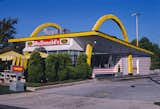
McDonald’s, Azusa, California.
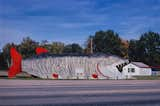
Fish Inn, Coeur d’Alene, Idaho.
#tour #countrys #strangest #architectural #attractions
Image Source : www.dwell.com
